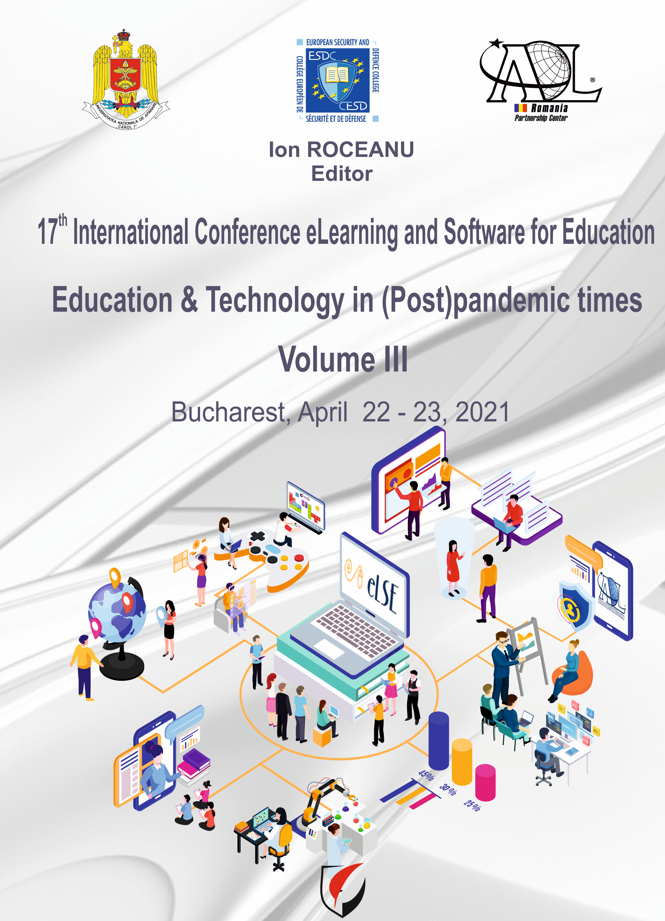BRIDGING THE GAP BETWEEN EDUCATION AND TECHNOLOGY IN FOREIGN LANGUAGE TEACHING
BRIDGING THE GAP BETWEEN EDUCATION AND TECHNOLOGY IN FOREIGN LANGUAGE TEACHING
Author(s): Ana-Mihaela IstrateSubject(s): Foreign languages learning, Methodology and research technology, ICT Information and Communications Technologies, Distance learning / e-learning
Published by: Carol I National Defence University Publishing House
Keywords: Synchronous learning; Computer Mediated Language Learning (CMLL); Microsoft Teams; grammatical competences; second language acquisition; intrinsic motivation;
Summary/Abstract: The present study tries to explain the challenges faced by the language teachers during the last twelve months of online teaching. Starting from the definition of synchronous e-learning and understanding the new role and importance of computer mediated language learning, the article explains how grammatical competencies and vocabulary acquisition, two important components of second language acquisition are affected by the new teaching and learning environment. At the same time, the study reviews some of the important literature in second language acquisition, trying to accommodate the theoretical framework with the difficulties of foreign language synchronous e- learning classes, through Microsoft Teams platform, during the last twelve months, which have been a real challenge not only for students, but also for the language teachers, who have been transformed into online facilitators, a position that we have never been used to. Last but not least, the article enumerates the technical difficulties as well as the useful instruments that the Microsoft tool offers to a language facilitator and the way they can successfully be incorporated in the learning process. Being at an important moment when all the theoretical argumentations, related to synchronous or asynchronous e-learning, have been put into practice, we realize that some of the theories were not feasible, or others, which seemed extremely futuristic, are now the new normal teaching and learning environment. Last but not least, the article focuses on the intrinsic and extrinsic motivation as well as student satisfaction with the new learning environment.
Journal: Conference proceedings of »eLearning and Software for Education« (eLSE)
- Issue Year: 17/2021
- Issue No: 03
- Page Range: 42-48
- Page Count: 7
- Language: English

